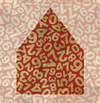Using OpenSCAD to model 3D structures
|
OpenSCAD makes you feel right at home once you know that a radius defines a sphere or that height and diameter define the surface of a cylinder. The OpenSCAD design software also lets you create structures for printing with a 3D printer. The tests performed for this article produced a cap for a USB stick, a model airplane, Lego bricks, and a replacement key.
Popular distributions offer OpenSCAD for installation, which is usually the 2104 version. The software homepage [1] explains how to download the updated version 2015.03-1. Downloading the newer version is worthwhile because it offers the possibility of directly incorporating text objects.
Introduction
Once the software starts, a window will open with an input area to the left, an output area to the right and a console. Various buttons offer basic functions. The icons to the left in the editor window are for common tasks such as opening and saving files, and typical editing actions, such as undoing, repeating and indenting.
[...]
Buy this article as PDF
Pages: 6
(incl. VAT)






